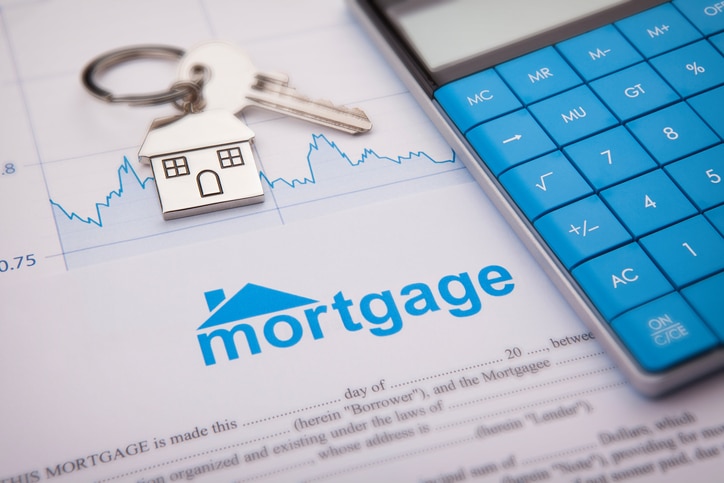Mortgage rates continue their upward trajectory as the Federal Reserve continues their pointed and aggressive response to stubborn inflation, with weekly U.S. average at 6.73% as of 3/8/23. This means that would-be homebuyers are continuing to face challenges of affordability and low inventory.
Let’s take a step back into history where mortgage rates have been and why.
Lowest Rates In History
2020 the average mortgage rate was 3.11%, and it kept falling to a new record low of just 2.65% in January of 2021. This was all due, however, to COVID-19 and the policies that were out in place from the federal reserve. Houses were flying off the shelf during the early COVID-19 pandemic as people were looking to move out of the cities and buying land when the cost of homes was high and the mortgage rates were low.
Historic Mortgage Rates: Important Years for Rates
The long-term average for mortgage rates is just under 8 percent. That’s according to Freddie Mac records going back to 1971. But mortgage rates can move a lot from year to year, and some years have seen much bigger moves than others.
1981: The all-time high for mortgage rates
1981 was the worst year for mortgage interest rates on record.
How bad is bad? The average mortgage rate in 1981 was 16.63 percent.
- At 16.63% a $200,000 mortgage has a monthly cost for principal and interest of $2,800
- Compared with the long-time average that’s an extra monthly cost of $1,300 or $15,900 per year
And that’s just the average — some people paid more. For the week of Oct. 9, 1981, mortgage rates averaged 18.63%, the highest weekly rate on record, and almost five times the 2019 annual rate.
2008: The mortgage slump
2008 was the final gasp of the mortgage meltdown. Real estate financing was available in 2008 for 6.03% according to Freddie Mac.
- The monthly cost for a $200,000 mortgage was about $1,200 per month, not including taxes and insurance
Post 2008, rates declined steadily.
2016: An all-time low for rates
Until recently, 2016 held the lowest annual mortgage rate on record going back to 1971. Freddie Mac says the typical 2016 mortgage was priced at just 3.65 percent.
- A $200,000 mortgage at 3.65% has a monthly cost for principal and interest of $915
- That’s $553 a month less than the long-term average
Mortgage rates had dropped lower in 2012, when one week in November averaged 3.31 percent. But some of 2012 was higher, and the entire year averaged out at 3.65% for a 30-year mortgage.
2019: The surprise mortgage rate drop-off
In 2018, many economists predicted that 2019 mortgage rates would top 5.5 percent. That turned out to be wrong. In fact, rates dropped in 2019. The average mortgage rate went from 4.54% in 2018 to 3.94% in 2019.
- At 3.94% the monthly cost for a $200,000 home loan was $948
- That’s a savings of $520 a month — or $6,240 a year — when compared with the 8% long–term average
In 2019, it was thought mortgage rates couldn’t go much lower. But 2020 and 2021 proved that thinking wrong again.
2021: The lowest 30-year mortgage rates ever
Rates plummeted in 2020 and 2021 in response to the COVID-19 pandemic. By July 2020, the 30-year fixed rate fell below 3% for the first time. And it kept falling to a new record low of just 2.65% in January 2021.
- At 2.65% the monthly cost for a $200,000 home loan is $806 a month not counting taxes and insurance
- You’d save $662 a month, or $7,900 a year, compared to the 8% long-term average
However, record-low rates were largely dependent on accommodating, Covid-era policies from the Federal Reserve. Those measures were never meant to last. And the more U.S. and world economies recover from their Covid slump, the higher interest rates are likely to go.
2022: Mortgage rates spike
Thanks to sharp inflation growth, higher benchmark rates, and a drawback on mortgage stimulus by the Fed, mortgage rates spiked in 2022 and continue through 2023.
Marry a Home, Date an Interest Rate
One thing mortgage professionals like to say is that you marry the home, but date the rate. Refinancing means homeowners locked into a high interest rate can typically attain a lower interest rate once the national rates come down. While there’s no limit on the number of times you can refinance your home, there are some stipulations that have to be met in order to do so. Learn more here: https://www.rocketmortgage.com/learn/how-often-can-you-refinance-your-home
This article is intended for informational purposes only.
This article is meant for general informational purposes and is not intended to constitute financial advice to any person. The information within should not be used for financial investment decisions or any other financial purposes, and to seek independent financial advice from an appropriate professional. The author does not give any warranty as to the accuracy of any information in the paper to any person for purposes of financial decisions.
© Weekly Real Estate News. This article may be used in marketing efforts only if full and clear credit is given to Weekly Real Estate News and a link is provided to the original article.















Great information, I love to know mortgage history, this is great.
thank you,
U OMITTED that MORTGAGES used to have a 20 YEAR$ TERM >>>>P
Thank you, for me personally this information
brings back the past.
In 1981 I was a Realtor and General Contractor building homes,
of which I had 55 buyers in financing when the interest rate went
over 16%. I lost 20 buyers who could not proceed to closing.
I was very fortunate to keep the other buyers.
This is a great historical perspective! Thank you for sharing.